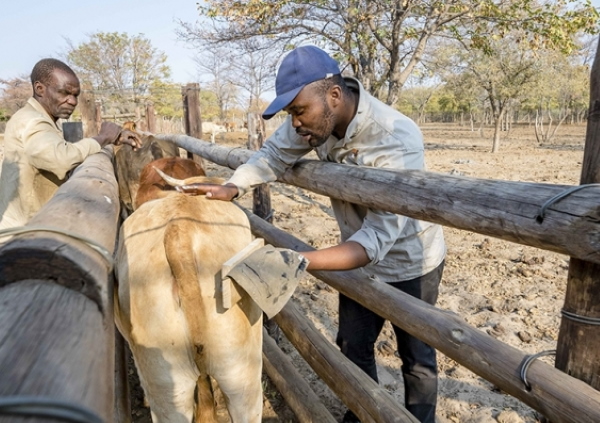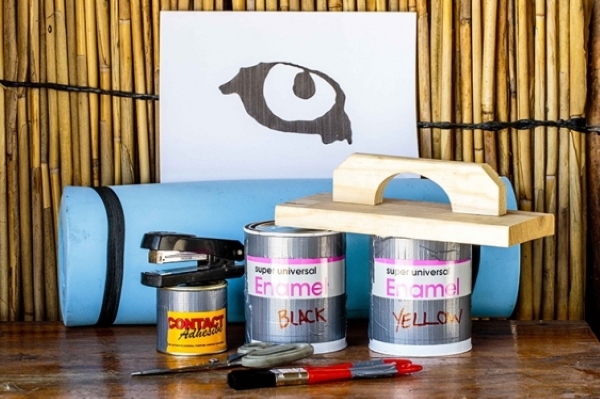Painting googly eyes painted on the back of livestock prompts predators to give up on prey - study
Painting googly eyes painted on the back of livestock prompts predators to give up on prey: a study led by the University of New South Wales (Australia) in collaboration with the Taronga Conservation Society Australia and the Botswana Predator Conservation would show that drawing eyes on cows' bottoms and horses (and other livestock) can protect animals from attacks by lions and other wildlife.
The experiment, which aims to provide farmers with a more sustainable solution than killing predators, was conducted on a selected number of cattle in the Okavango Delta region in Botswana, where livestock are often prey to lions, leopards, hyenas. spotted, cheetahs and African wild dogs.
In fact, it is known that predators rely on not being identified by their prey: the researchers therefore hypothesized that pretending to look at them could inhibit attacks.
“The lions are ambush predators which are based on stalking - explains Neil Jordan, who led the study - and therefore the element of surprise, or being seen by their prey, can lead them to abandon the hunt. We wanted to verify the possibility of intervening in this way to reduce livestock losses, potentially protecting lions and livelihoods at the same time ”.
Yes, because the breeders, to protect their livestock, intervene with the hunting of predators (and not only in Africa, it also happens here), but this system interferes destructively with the ecosystem. Normally, in fact, herds of cattle (ranging from about 6 to 110 individual cattle) are kept in predator-proof enclosures at night, but graze unattended for most of the day, when the vast majority of lion attacks occur and other predators.
In Belluno they want to kill all the wild boars: too much damage to crops
The team then worked with farmers in the Okavango Delta region to paint on the back 14 herds of cattle that had recently suffered lion attacks, particularly one third of each herd with googly eyes and one third with simple cross marks, leaving the rest with nothing (control cattle).

©Communication Biology
An alternative like this really could have protect both prey and predators. And the researchers were right: it turned out that cattle painted with artificial eyes had one significantly higher chance of surviving compared to unpainted or cross-painted control cattle within the same herd.
In particular, no "cow with eyes on the back" was killed by predators during the ambushes that took place in the four years of study, while 15 unpainted cattle and 4 cross paintings were killed.
The results achieved thrilled the scientists, who also highlighted some "surprises".
"Cattle marked with simple crosses were much more likely to survive than unmarked cattle from the same herd - continues Jordan - Although cattle with painted eyes were still more likely not to be attacked than other groups," simple crosses are a deterrent better than not making any signs, which was unexpected ”.
In addition to the scientific data that seem to prove the effectiveness of the technique, the researchers also produced some "guidelines”For farmers, which include tips on how and where to draw googly eyes.

©Bobby-Jo Photography/Università del New South Wales
Certainly, however, some doubts remain, in particular whether the deterrent effect would remain even without the "sacrificial lambs" or individuals without any sign, and if at some point this effect could end, or rather if the predators "understand the game" and don't be fooled anymore.
On this point, however, the last word is not said.
"This is an important problem for almost all non-lethal approaches and in this case it is not yet known whether the technique will remain effective in the long term - explains the researchers - Habit may be a key issue for the resident carnivores they often encounter. "Eye cows", but in many areas carnivores may simply be passing through and the habit is less of a concern ".
In any case, it is clear, the authors point out, that this technique could be useful but together with other more traditional or future ones.

©Bobby-Jo Photography/Università del New South Wales
Research will continue.
The work was published in Communications Biology, by the Nature group.
Sources of reference: University of New South Wales / Communications Biology
Read also:
- Free food for shepherd dogs to protect wolves and sheep
- Fistulated cows: the horror that hides behind a hole in their stomach


























